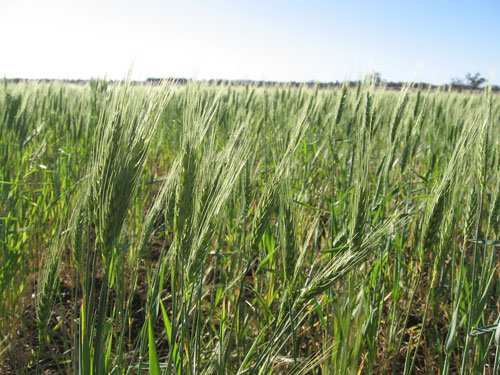Plant Production & Nutrition
Optimum plant growth is possible only when all essential elements are adequately supplied and in balance with each other.

NITROGEN (N) – represents life, crucial in the formation of proteins
- Nitrogen is a part of all living cells and is a necessary part of all proteins, enzymes and metabolic processes involved in the synthesis and transfer of energy
- Nitrogen is a part of chlorophyll, the green pigment of the plant that is responsible for photosynthesis
- Helps plants with rapid growth, increasing seed and fruit production and improving the quality of leaf and forage crops
If Deficient
- Slow growth
- Leaves are smaller and yellowish
PHOSPHORUS (P) – the power broker
- Is an essential part of the process of photosynthesis
- Involved in the formation of all oils, sugars, starches, etc.
- Effects rapid growth
- Encourages blooming and root growth
If Deficient
- Poorly developed root system
POTASSIUM (K) – the great regulator
- Potassium is absorbed by plants in larger amounts than any other mineral element except nitrogen and, in some cases, calcium
- Helps in the building of protein, photosynthesis, fruit quality and reduction of diseases
If Deficient
- Small fruits, susceptible to disease
CALCIUM (CA) – is the servant
- An essential part of plant cell wall structure
- Provides for normal transport and retention of other elements
- Provides strength in the plant
If Deficient
- Weak plant
MAGNESIUM (MG) – puts the ‘green’ in green plants
- Important part of chlorophyll in all green plants and essential for photosynthesis
- Activates many plant enzymes needed for growth
- Determines the quality of a crop
If Deficient
- Poor quality crop
SULFUR (S)
- Essential plant food for production of proteins
- Promotes activity and development of enzymes and vitamins
- Helps in chlorophyll formation
- Improves root growth and seed productionHelps with vigorous plant growth and resistance to cold
If Deficient
- Leaves become yellowish green and exhibit a slow stunted growth
- Stems are woody and small in diametre
BORON (B)
- Helps in the use of nutrients and regulates other nutrients
- Aids production of sugar and carbohydrates
- Essential for seed and fruit development
If Deficient
- Small fruit that are brown in colour
COPPER (CU)
- Important for reproductive growth
- Aids in root metabolism and helps in the utilization of proteins
If Deficient
- Probable loss in grain yield
- Probable loss in straw yield
CHLORIDE (CL)
- Aids plant metabolism
If Deficient
- Root growth is slow
IRON (FE)
- Essential for formation of chlorophyll
If Deficient
- Stunted growth and leaves may drop easily
MANGANESE (MN)
- Functions with enzyme systems involved in breakdown of carbohydrates, and nitrogen metabolism
If Deficient
- Reduced plant size and decreased fruit production
MOLYBDENUM (MO)
- Helps in nitrogen metabolism and synthesis of proteins
If Deficient
- Pale leaves that may be scorched, cupped or rolled
ZINC (ZN)
- Essential for the transformation of carbohydrates
- Regulates consumption of sugars
- Part of the enzyme systems which regulate plant growth
If Deficient
- Plants fail to develop normally
